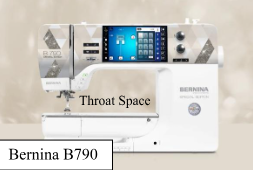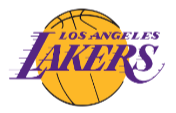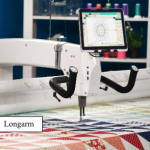The 63 in a 23-year-old
Katie Alison Turner
Personal Statement
My name is Katie, and I have been quilting for a while now. I enjoy the creativity of it but also the math. In this essay, I write about how different types of literacy can intersect. I can talk about quilting all day long. I frequent a quilt shop in Snohomish, where i used to work called Quilting Mayhem. I hope you enjoy my essay.
The 63 in a 23-year-old
The average age for a quilter is 63 years old. I may fall short in the age portion for my fellow quilters, but I make up for it with my math literacy. Quilting and math seem like two very different areas. However, you need to be a math whiz to quilt efficiently and effectively. Today, I will be breaking down why math and quilting go hand in hand.
First, math can be very specific. With quilting, geometry is the base of most quilts. Whether sewing from a pattern or making it up as you go, even buying fabric is a mathematical challenge. How much do I need? When can I go to the fabric store? Do I have enough material in my stash to complete this quilt? How much yardage do I need for binding and backing? The list goes on and on. I generally keep a small quilting notebook to keep all these questions straight. It must be physical, or the numbers get all jumbled in my head. I learned this trick from my old coworker, Baz. They managed the fabric department and always gave me tips and tricks for picking fabric and how much I would need for specific projects.
When buying fabric in the U.S., you must think in yards, but you must also buy extra. Also, when the material is being calculated, you can’t buy the exact size for your backing fabric. There is quite a long list of scenarios. I will try to keep this simple. When a quilt is being quilted—all three layers are being put together—a machine called a longarm is used. With a longarm, the quilt is attached using a frame like an enormous hoop. To attach a quilt, 4 inches is needed on each side of the backing fabric. Once the Quilt is connected, the stitching is generally done in rows, almost like using a typewriter. Every time you finish a row you would need to advance the quilt to a new row. I learned how to use a longarm at my work from Marla. I wouldn’t do customers’ quilts, but I would rent out the machine to be able to quilt my own. Using a longarm machine is not easy. It is similar to learning to write. At first, your lines look messy and jagged but after some (A lot) of practice it becomes easier, and your stitches glide along the quilt, creating beautiful lines, curls, and curves.
Let’s talk about sewing machines. An advanced sewist will own around three sewing machines. I currently own four machines; however, only three work. Most people have a rule when quilting: if you start with one machine, you should not switch midway through. This rule exists because not all quarter-inch feet are made equal.  When quilting, consistency is critical. You won’t notice all seams being slightly off, but you will see if only half are. Sewing machines are generally expensive for something nice. If you plan to sew a lot, I recommend a nicer sewing machine for a couple of reasons: ease of use, speed, stitch consistency, and accuracy. You are cutting right at the perfect size, but if your quarter-inch seam is not accurate, your block will either be too big or too small. Machines are also measured in throat space—the space from the needle to the wall on the right.
When quilting, consistency is critical. You won’t notice all seams being slightly off, but you will see if only half are. Sewing machines are generally expensive for something nice. If you plan to sew a lot, I recommend a nicer sewing machine for a couple of reasons: ease of use, speed, stitch consistency, and accuracy. You are cutting right at the perfect size, but if your quarter-inch seam is not accurate, your block will either be too big or too small. Machines are also measured in throat space—the space from the needle to the wall on the right.
 When I was starting to quilt, the sewing machine I had broke. So, as any logical person would do, I went to the quilt store to buy a new one. My jaw hit the floor when I walked in. It was huge. However, I didn’t just leave with a new machine when I left the building. I left with a job. They liked my attitude and were hiring, so I said, “Why not?” I worked there for almost two years. In those two years, I traded the not-so-great machine for a Bernina B790, one of the top models. I will never let go of that machine.
When I was starting to quilt, the sewing machine I had broke. So, as any logical person would do, I went to the quilt store to buy a new one. My jaw hit the floor when I walked in. It was huge. However, I didn’t just leave with a new machine when I left the building. I left with a job. They liked my attitude and were hiring, so I said, “Why not?” I worked there for almost two years. In those two years, I traded the not-so-great machine for a Bernina B790, one of the top models. I will never let go of that machine.
Math with the quarter-inch seam is something you must master to become a fantastic quilter. Most seams will be a quarter-inch. This changes occasionally due to personal preference. If I were to make a 50-inch by 50-inch quilt, with 10 squares horizontally and 10 vertically. You would think the math would be easy. However, you need to add a quarter-inch seam allowance to each square. This turns 5-inch completed squares into 5.5-inch cutouts to be sewn together. The fabric is typically around 40-44 inches wide when purchasing material. Also, store cuts are not always straight or accurate. You can’t buy the exact amount you need. For the 50-inch by 50-inch quilt alone, I would need at least 2.25 yards of fabric. This does not include if I want to quilt with multiple fabrics.
Math has always been my strong suit, whether geometry or statistics. Math has helped me a lot with my quilting. I don’t think there is a day that I’m not quilting or at least thinking about it. I love creating quilts that are both complex and simple. I find the simpler quilts are much more challenging. Getting the points to match up every single time is very difficult. Math can be precise, and it can be broad. When quilting, we must be precise very often—cutting a square to the correct size or measuring the distance a point is from the edge. This is all very precise. But no matter how accurate we try to be, most quilts will never be perfect. In the first ever quilting class I attended, Judi, the instructor, showed me only to use one form of measurement. Her nickname was General Judi. You had to make sure you got your homework (quilt blocks) done in time for her class, or she would stare you down. She honestly was like a grandma to me. I miss her dearly. We always discussed sewing machine deals since I worked in the machine sales department. She would always come out if one of her student’s machines wasn’t working. She was one of my biggest advocates. She gave me more than one machine sale, to say the least.
Another aspect of math in creative art is color theory. Most logos like McDonald’s, Shell, or Lake Washington Tech are a mathematical formula on the color wheel.  Let’s take The Los Angeles Lakers logo. The purple is almost the same location as the yellow on the opposite side. These are complementary colors. I won’t bore you with all of the small details. But if you want to learn more, Matt Grove has a fantastic blog about graphic design in which he has a post about color theory and the simple mathematics of it. Here is a link to my favorite explanation of his.
Let’s take The Los Angeles Lakers logo. The purple is almost the same location as the yellow on the opposite side. These are complementary colors. I won’t bore you with all of the small details. But if you want to learn more, Matt Grove has a fantastic blog about graphic design in which he has a post about color theory and the simple mathematics of it. Here is a link to my favorite explanation of his.
Math is everywhere, especially in crafts, art, and even music. Often in high school, students often ask their math teacher when they would ever use these skills in real life. And I must say it’s everywhere whether you are looking for it or not. Math is the base for all of my quilting literacy. I don’t think I’ll ever stop creating and doing the math every step of the way.


